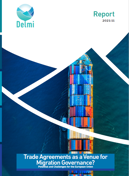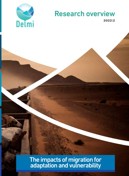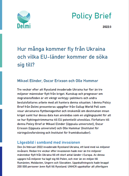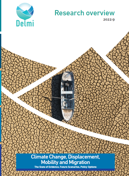The purpose of this report is to identify the propensity to migrate to Sweden from LMI countries, see who it is that wishes to move to Sweden and what these groups look like. Furthermore, the report discusses how factors such as propensity to migrate can be used in forecasts of future migration flows. The study uses data from the Gallup World Poll (GWP), a worldwide annual survey covering 160 countries and 99% of the world's population.
Overall conclusions
- A significant proportion of the population in the world's LMI countries wants to move, mainly to richer countries.
- About half of those who wish to move to Sweden live in five countries: China, Iran, Turkey, Iraq and Russia.
- Sweden is also particularly popular as a destination country in some countries with relatively small populations, such as Palestine, Somalia, Serbia, Bosnia and Herzegovina and Montenegro. But even if the willingness to migrate is high, the small population makes it unlikely that there would be large migration flows from these particular countries.
- Those who want to move from their home countries differ from those who prefer to remain in that they are more often male, young and without family, urban dwellers, relatively well-educated and have higher incomes.
- Those who specifically state that they want to move to Sweden also stand out in that they are less religious and more often have health problems.
- Although surveys of willingness to migrate are important in order to better predict and plan for future migration flows, this research is in its infancy. We need more different measures of willingness to migrate and greater knowledge of how individuals' migration decisions are shaped. It would offer a deeper understanding to be able to understand and manage the migration flows of the future.
About the authors
Mikael Elinder is an associate professor at the Department of Economics, Uppsala University; Oscar Erixson, Ph.D. Economics, Uppsala University; Olle Hammar, Ph.D. Economics, Uppsala University.
The report and policy brief were published on 21 April 2023.
The policy brief is available in both English and Swedish, but the report is only available in Swedish.
Photo by Ferhat Deniz Fors Unsplash




